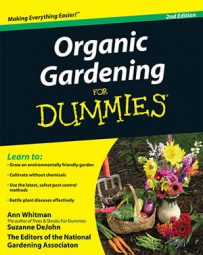When you plan your garden you have to start by assessing what you have. You want your garden to prosper in your climate and to pick plants that thrive in your soil. You must also take existing buildings, walls, and walkways into account in your garden plan. There are certain classic gardening problems and some standard solutions:
You have too much shade: Too much shade is often a problem you can remedy by pruning some trees and bushes.
You have too much sun: If your garden space is sunnier than you’d like, the quick solution is to add human-made items — try an umbrella or two, a pergola (arbor), or an outdoor tent.
Your yard is too big: Create garden beds around the sides of the yard, widening or extending them as you can.
Alternatively, create beds in the middle of a lawn.
Add large, sprawling structures that take up a lot of yard space, such as paths, terraces, a patio or deck, a pool, or a gazebo.
Fence in or enclose individual “garden rooms” within spaces around your yard. The fence can be an artificial fence made of wood or metal, or it can be made of hedges, ornamental grasses, or trellises overhung with vines.
Your yard is too small: Don't feel limited by size. Your "pocket garden" can be beautiful!
With these methods, you can transform your cozy little yard into the garden of your dreams:
If you have a fence, paint it a bright color, add lush vines or climbing roses, or adorn it with potted plants.
Place plant types and textures above and behind one another, stepping up to the edges of your yard. Display a combination of in-ground and potted plants on a rack or stepladder.
Add a statue, a small fountain, or one spectacular pot or urn with a big, dramatic plant to draw attention away from the close boundaries.
Every garden space has its strengths. You can save yourself a lot of time, effort, and grief by identifying advantages and working with what you have. Here are a few examples of conditions you may find within your garden space:
Sunny days: Bright sunshine is beloved by many plants, especially those with colorful flowers. Rejoice and be glad you have it; then go shopping for a wide range of bright and lively plants.
The dark side: Without direct blasts from the hot sun, plants in a shady area look fresher and crisper for far longer.
Dry conditions: Instead of knocking yourself out trying to provide water for thirsty plants, seek out ones that prosper in drier growing conditions. Lots of exciting dry-ground, drought-tolerant plants are available to gardeners these days.
Water: If your yard’s soggy or boggy, grow plants that relish damp ground. Loads of good-looking choices — large and small, tall and ground-covering, flowering and foliage — are available.

